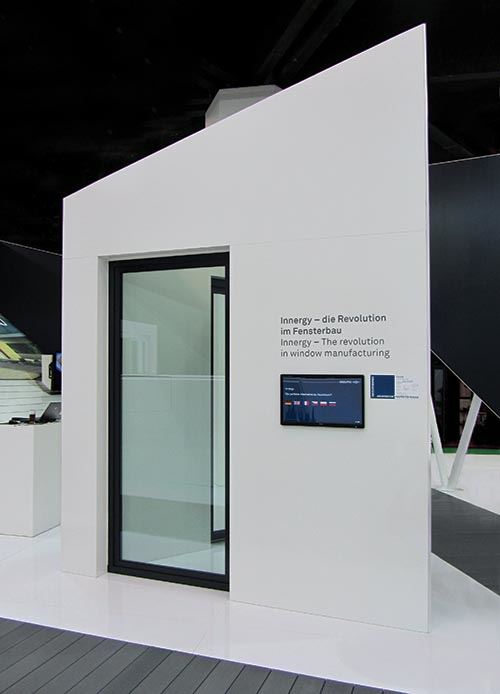Pultruded window: Glass/polyurethane prototype wins award
Deceuninck Group NV (Hooglede-Gits, Belgium), is at the forefront of composite window frame design and innovation, as evidenced by its recent award for a large, prototype window designed to open like a door.
Inoutic (Bogen, Germany), a member of the Deceuninck Group NV (Hooglede-Gits, Belgium), is at the forefront of composite window frame design and innovation, as evidenced by its recent award for a large, prototype window designed to open like a door, during Fensterbau 2014, a European trade show for windows, doors and façades. The “Innovation Award for Architecture + Windows, Doors and Façades” was presented to Inoutic by the European architecture journals AIT and xia intelligente architecktur. The window’s frame was pultruded by Deceuninck North America (Monroe, Ohio), using the company’s trademarked Rovex technology. Rovex combines fiberglass rovings with a specially formulated two-component polyurethane resin from Bayer MaterialScience LLC (Pittsburgh, Pa.), based on Baydur PUL (pultrusion grade). The Baydur PUL 2500- and 3500-grade resin formulations include proprietary bio-based materials and are free of volatile organic compounds (VOCs). Bayer’s material and injection-die pultrusion know-how combined with Deceuninck’s expertise in design and tooling for highly complex profile shapes were credited for the balcony door’s success.
The result? Judges praised the “mechanical performance and process advantages” of the profile and were impressed with the slim line (the profile depth is a mere 59 mm/2.2 inches) and design freedom with regard to color and feel. Like other pultruded fiberglass windows and doors, they offer greater dimensional stability, impact resistance, strength and color fastness than the conventional vinyl and wood windows that still dominate the residential construction market. In addition, the low thermal conductivity of fiberglass enables window designs with U values (the measure of thermal transmittance) two to three times more favorable than those of aluminum windows. They won’t corrode or conduct electricity, and they offer superior structural, thermal and environmental performance compared to conventional materials, according to Deceuninck.
More specifically, the Rovex PU window profiles reportedly outperform pultruded glass/polyester and glass/vinyl ester products. And the thermal properties of glass/polyurethane composite are expected to translate into significant energy savings for customers and continue to meet thermal performance requirements as they increase. Such an increase is expected, for example, in the U.S., when the Environmental Protection Agency’s ENERGY STAR Version 6.0 Residential Windows, Doors, and Skylights Specification becomes effective in two phases, beginning Jan. 1, 2015.
Related Content
-
Pultrusion: The basics
A primer describing what pultrusion is, its advantages and disadvantages, and typical applications.
-
Jeep all-composite roof receivers achieve steel performance at low mass
Ultrashort carbon fiber/PPA replaces steel on rooftop brackets to hold Jeep soft tops, hardtops.
-
TU Munich develops cuboidal conformable tanks using carbon fiber composites for increased hydrogen storage
Flat tank enabling standard platform for BEV and FCEV uses thermoplastic and thermoset composites, overwrapped skeleton design in pursuit of 25% more H2 storage.















